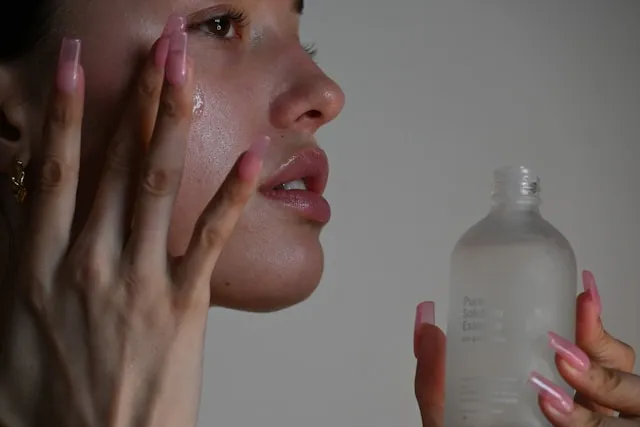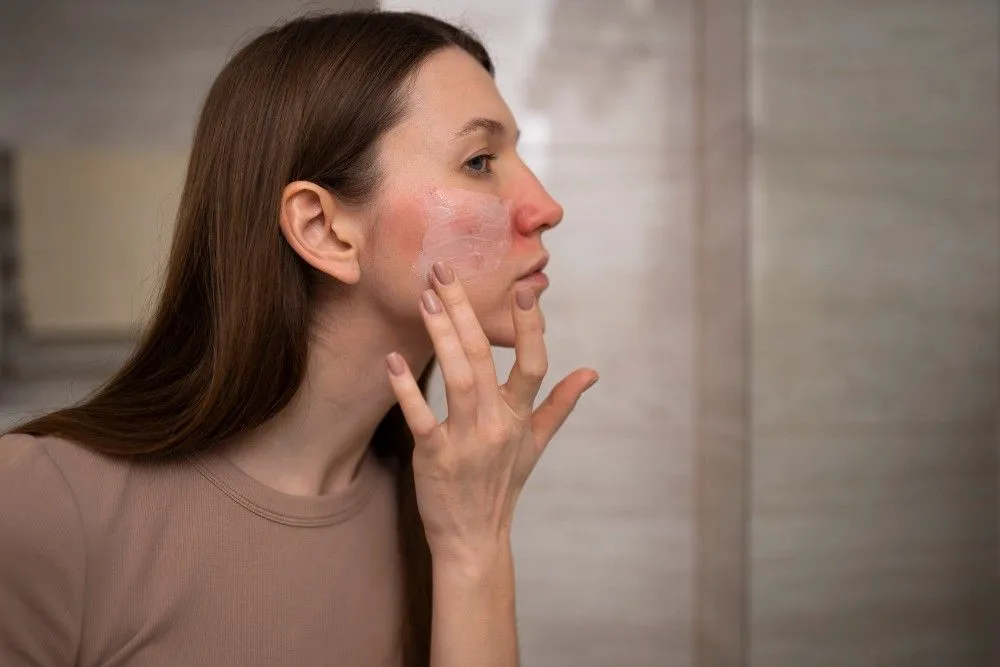Thrush, commonly known as candidiasis, is a common fungal infection caused by a Candida fungus overgrowth in the body. Candida is a yeast found in small numbers in the mouth, digestive tract, and skin. Candida can grow out of control when the body's microbial equilibrium is interrupted, creating an illness.Thrush can develop in various locations across the body, including the mouth, throat, genital area, and skin folds. Itching, irritation, redness, and white spots or discharge are common thrush symptoms. Thrush is more frequent in women, although it can also affect males and kids.Antifungal drugs, which can be applied locally or taken orally, can be used to treat thrush. However, it is critical to seek medical attention to receive a diagnosis and treatment. Recurrent or severe occurrences of thrush may indicate an underlying medical disease and should be investigated by a doctor. In today's blog, we will look at the common symptoms of thrush in males and females. Yes, antifungal drugs can be used to treat thrush. The type of medication used and the infection's severity and location will determine the treatment length. For oral thrush, treatment may include topical antifungal creams, oral antifungal medicines, or antifungal tablets.
Yes, antifungal drugs can be used to treat thrush. The type of medication used and the infection's severity and location will determine the treatment length. For oral thrush, treatment may include topical antifungal creams, oral antifungal medicines, or antifungal tablets.
Can thrush be treated?
 Yes, antifungal drugs can be used to treat thrush. The type of medication used and the infection's severity and location will determine the treatment length. For oral thrush, treatment may include topical antifungal creams, oral antifungal medicines, or antifungal tablets.
Yes, antifungal drugs can be used to treat thrush. The type of medication used and the infection's severity and location will determine the treatment length. For oral thrush, treatment may include topical antifungal creams, oral antifungal medicines, or antifungal tablets. - Topical creams or oral drugs may be used to treat vaginal thrush. Severe or recurring thrush may necessitate more extended treatment periods or a mix of therapy.
- There are lifestyle and dietary modifications, in addition to medicine, that can help lower the risk of developing thrush or aid in treating the infection. These may include avoiding particular meals, practising excellent oral hygiene, dressing comfortably, and taking probiotics.
- It is critical to see a healthcare provider to diagnose and treat thrush accurately. In addition, recurrent or severe occurrences of thrush may indicate an underlying medical disease and should be investigated by a physician.
13 common signs and symptoms if you have thrush are-
Thrush, commonly known as candidiasis, is a fungal infection caused by the Candida fungus overgrowth in the body. Thrush symptoms differ based on the location of the body afflicted. Here are the 13 most prevalent symptoms of thrush in men and women, along with their descriptions:1. Itching and irritation -
In the affected area, thrush can produce significant itching and irritation. That is most prevalent in the vaginal area, although it can also happen in the mouth or throat.2. Redness and swelling in the affected region -
Thrush can produce redness and swelling in the affected area. That might cause discomfort and trouble swallowing in the mouth or throat. Thrush in the mouth or throat can create white patches on the tongue, inside the cheeks, or on the roof of the mouth. These patches may be uncomfortable or may not be painful at all.3. Abnormal discharge -
Thrush can cause a white or yellowish discharge from the vagina in women. This discharge may smell yeasty. This can lead to the development of greasy discharges that can be sticky.4. Urinary pain -
Thrush can induce urine pain or burning, especially in women. It is more commonly seen in females but can be associated with deeper pain in the urinary tract.5. Pain during Sexual intercourse -
Thrush can cause pain or discomfort during sexual intercourse, especially in women. Thrush can cause difficulty in having sex. Thus, one should avoid it for some time.6. Skin dryness and cracking -
In some cases, thrush can cause skin dryness and cracking in the vaginal area, especially if the infection is left untreated for a long time. The skin in the affected area may become red, itchy, and painful, and the cracking may make it more vulnerable to other types of infections. It is important to seek medical attention if you experience any symptoms of thrush, to prevent further complications.7. Rashes -
Thrush might result in a rash in the affected area. Itching or discomfort may accompany this. Itching, rashes, and dryness are common factors for thrush development. Thrush might result in a rash in the affected area. Itching or discomfort may accompany this.8. Severe pain -
Thrush can produce pain in the affected area, especially the mouth, throat, or vaginal area. Sometimes it can also be common in the folds of the skin.9. Swollen lymph nodes -
Thrush can result in swollen lymph nodes in the afflicted area, notably in the groyne. Swollen lymph is notable and should not be mistaken as a tumor.10. Fatigue or lethargy -
This may occur, especially in cases where the thrush infection is severe or has spread to other parts of the body. Thrush is caused by an overgrowth of a type of fungus called Candida, which can release toxins that can cause fatigue, weakness, and other flu-like symptoms.11. Nausea and vomiting -
It is uncommon for thrush to cause nausea and vomiting, but in severe cases where the infection spreads to other parts of the body, such as the oesophagus or stomach, it is possible. These symptoms may be accompanied by difficulty swallowing, abdominal pain, and diarrhea.12. Fever and chills -
This can occur in severe cases where the infection has spread to other parts of the body, such as the bloodstream. When Candida fungus enters the bloodstream, it can cause a condition called candidemia, which can lead to fever, chills, and other symptoms such as rapid breathing and an elevated heart rate. in rare circumstances.13. Bad breath or taste in the mouth -
Bad breath or an unpleasant taste in the mouth can be a symptom of thrush. The white patches of fungus that develop in the mouth and throat during a thrush infection can cause an overgrowth of bacteria, leading to a foul odor or taste. This can be especially noticeable when eating or drinking, and can be a persistent problem until the thrush infection is treated.It is crucial to understand that not everyone with thrush will have different symptoms, and the intensity of the signs and symptoms may vary. If you suspect you have thrush, consult a doctor immediately for an accurate diagnosis and suitable treatment.Also Read: Bacterial Infection Mouth: Causes, Symptoms and TreatmentsHow can one treat thrush at home?
While seeing a healthcare provider for a correct diagnosis and adequate treatment for thrush is essential, many home treatments can help ease the symptoms of thrush and improve healing. Here are some home treatments that may be beneficial for thrush:- Probiotics have beneficial bacteria that can help restore the body's natural bacterial balance. Consuming probiotic-rich foods like yogurt and kefir or a probiotic supplement may help prevent Candida overgrowth.
- Garlic possesses antifungal qualities that may aid in the fight against Candida overgrowth. Therefore, garlic pills or adding garlic to your diet may be beneficial.
- Coconut oil has antifungal effects and may aid in the reduction of Candida overgrowth. Consuming or applying coconut oil to the afflicted area can help with itching and redness. Tea tree oil contains antifungal effects and may aid in the reduction of Candida overgrowth. For oral thrush, dilute tea tree oil with a different carrier oil and apply it to the affected area, or use a tea tree oil mouthwash.
- Rinsing the mouth or vaginal area with salt water may help relieve thrush symptoms and promote recovery.
- Avoiding certain foods: Certain foods, such as refined sugar, processed meals, and alcohol, may increase Candida growth. Avoiding these foods may aid in the reduction of Candida overgrowth.
Conclusion-
Thrush is an infection caused by fungi - candida species and can affect different body areas, like the mouth, skin folds, and vagina. The disease can be uncomfortable and cause symptoms like itching, soreness, and discharge of fluids. That can result in a severe health condition.The treatment of thrush can involve antifungal medication and can be taken orally to reduce the infection in the body. In conclusion, this cannot be very pleasant, but it is treatable under a physician. In addition, treatment and preventive measures can help manage and prevent future occurrences of thrush.Frequently Asked Questions
How many times can one have thrush?
One can have thrush twice in six months.
What should one not do when they have thrush?
One should avoid perfumes and shower gels if they have thrush.
How many days can one take to cure thrush?
It can take about 4 to 5 days to eliminate thrush.
What is the spreading rate of thrush?
Oral thrush can cause creamy white lesions and develop on the tongue and inner cheeks.
Will oral thrush need treatment?
Treatment can be simple and necessary, so one can use antifungal creams.
What are the symptoms of thrush In infants?
In infants, symptoms of thrush may include fussiness during feeding and diaper rash with a raised, bumpy texture.

Reviewed by







